The Impact of Historic Underground Buildings on Land Use
Abstract
:1. Introduction
2. Materials and Methods
2.1. Study Area Description
2.2. Research Process
- -
- Tunnel scan data acquisition:
- Collect and analyze point cloud files from previous tunnel scans.
- -
- Tunnel point cloud stitching:
- Stitching the tunnel data obtained from different locations in the past data into a complete tunnel point cloud model.
- Collection of surface data:
- -
- Ground Surface Scanning:
- Scans the surface above the pit to obtain data.
- -
- Surface point cloud stitching:
- Combines surface data scanned from different locations into a complete surface point cloud model.
- -
- The control points are verified by measuring the control points to ensure that the control points have not been moved, changed, or buried, and that the data obtained by scanning meets the requirements to ensure the accuracy of the subsequent coordinate system data.
- -
- The surface and tunnel point cloud models were merged with environmental feature points and assigned TWD97 coordinates through control points for subsequent analysis.
- -
- Based on the point cloud model data, the depth judgment analysis is carried out and the tunnel sectional view is made.
- -
- Nesting point cloud data with cadastral map data and plotting and analyzing the cadastral status of the tunnel.
- -
- Elevation models were built from tunnel and surface data to plot trend maps of tunnel height and surface thickness.
- -
- Based on the integrated data, the corresponding part is extracted for analysis, such as the plane location, the depth of the tunnel relative to the surface, and the ownership of the lands, and the final result data are produced.
2.3. Laser Scanning Execution Process
3. Results
3.1. Laser Scanning and Point Cloud Data Processing
3.1.1. The Scanning of Underground Tunnels
3.1.2. The Scanning of Ground Surface
3.2. The Point Cloud Data Are Drawn into a Floor Plan through AutoCAD
4. Discussion
4.1. Point Cloud Model Analysis
4.2. Point Cloud Model and Cadastral Overplotting Results
5. Conclusions
Author Contributions
Funding
Data Availability Statement
Conflicts of Interest
References
- Lin, H.T. The Cold War between Taiwan and China—The Declassified Documents; Joint Publishing: Hong Kong, China, 2015. [Google Scholar]
- Tsai, H.-M.; Chiang, B.-W. Enclosing resources on the islands of Kinmen and Xiamen: From war blockade to financializingnatural heritage. J. Mar. Isl. Cult. 2014, 3, 69–77. [Google Scholar] [CrossRef]
- Vosselman, G.; Maas, H.-G. Airborne and Terrestrial Laser Scanning; Whittles Publishing: Dunbeath, UK, 2010. [Google Scholar]
- Chiabrando, F.; Turco, M.L.; Rinaudo, F. Modeling The Decay in an Hbim Starting From 3D Point Clouds. A Followed Approach For Cultural Heritage Knowledge. In Proceedings of the 26th International CIPA Symposium 2017, Ottawa, ON, Canada, 28 August–1 September 2017. [Google Scholar]
- Campi, M.; di Luggo, A.; Palomba, D.; Palomba, R. Digital Surveys and 3D Reconstructions for Augmented Accessibility of Archaeological Heritage. Int. Arch. Photogramm. Remote Sens. Spat. Inf. Sci. 2019, XLII-2/W9, 205–212. [Google Scholar] [CrossRef]
- Wehr, A.; Lohr, U. Airborne laser scanning—An introduction and overview. ISPRS J. Photogramm. Remote Sens. 1999, 54, 68–82. [Google Scholar] [CrossRef]
- Gatziolis, D.; Andersen, H.-E. A Guide to LIDAR Data Acquisition and Processing for the Forests of the Pacific Northwest; US Department of Agriculture, Forest Service, Pacific Northwest Research Station: Washington, DC, USA, 2008.
- Baltsavias, E.P. Airborne laser scanning: Basic relations and formulas. ISPRS J. Photogramm. Remote Sens. 1999, 54, 199–214. [Google Scholar] [CrossRef]
- Dell’Amico, A. The Walled City of Verona. Integrated Survey Systems for the Enhancement and Promotion of Verona’s City Walls, Humanities and Digital Technologies for Shaping the Future. In Proceedings of the 29th International CIPA Symposium, Florence, Italy, 25–30 June 2023. [Google Scholar]
- Hwang, L.S.; Liu, P.Y. A study on 3D Stereo Map using Multi-Satellite Measurement and 3D LiDAR technology. Taiwan J. Geoinformatics 2022, 10, 2. [Google Scholar]
- Shan, J.; Toth, C.K. (Eds.) Topographic Laser Ranging and Scanning: Principles and Processing; CRC Press: Boca Raton, FL, USA, 2008. [Google Scholar]
- Boehler, W.; Heinz, G.; Marbs, A. The Potential of Non-Contact Close Range Laser Scanners for Cultural Heritage Recording; CIPA Working Group V: Mainz, Germany, 2001. [Google Scholar]
- Biolo, F.; Guzzetti, F.; Anyabolu, K.L.N. Documenting, Understanding, Preserving Cultural Heritage: Humanities and Digital Technologies for Shaping the Future. In Proceedings of the 29th CIPA Symposium, Florence, Italy, 25–30 June 2023. [Google Scholar]
- Aiello, D.; Bolognesi, C. Reviviendo La Historia: La Reconstrucción Digital Del Convento De Santa María De Las Gracias En Milán. Virtual Archaeolagy Rev. 2020, 11, 106–126. [Google Scholar] [CrossRef]
- Ruther, H.; Chazan, M.; Schroeder, R.; Neeser, R.; Held, C.; Walker, S.J.; Matmon, A.; Horwitz, L.K. Laser scanning for conservation and research of African cultural heritage sites: The case study of Wonderwerk Cave. J. Archaeol. Sci. 2009, 36, 1847–1856. [Google Scholar] [CrossRef]
- Lichti, D.D.; Gordon, S.J.; Stewart, M.P. Ground-based laser scanners: Operation, systems and applications. Geomatics 2002, 56, 21–33. [Google Scholar]
- Doneus, M.; Briese, C.; Fera, M.; Janner, M. Archaeological prospection of forested areas using full-waveform airborne laser scanning. J. Archaeol. Sci. 2008, 35, 882–893. [Google Scholar] [CrossRef]
- Tikhonova, K.V.; Solovyova, Y.S.; Geydor, V.S.; Tikhonov, D.A. Technology of three-dimensional laser scanning of real estate objects (3D modeling) in cadastral activities. IOP Conf. Ser. Earth Environ. Sci. 2021, 937, 042071. [Google Scholar] [CrossRef]
- Kostov, G. 3D Terrestrial Laser Scanning for Cadastral and Design Activities—Performing, Data Processing and Analysis. Storage and Backup in the Light of the Nowadays Cloud Possibilities. FIG WW 2020, September 2020. Available online: https://www.researchgate.net/publication/344172065_3D_terrestrial_laser_scanning_for_cadastral_and_design_activities_-_performing_data_processing_and_analysis_Storage_and_backup_in_the_light_of_the_nowadays_cloud_possibilities (accessed on 2 June 2024).
- Chio, S.-H.; Hou, K.-W. Application of a Hand-Held LiDAR Scanner for the Urban Cadastral Detail Survey in Digitized Cadastral Area of Taiwan Urban City. Remote Sens. 2021, 13, 4981. [Google Scholar] [CrossRef]
- CIPA-ICORP-ISCARSAH 2017 Joint Meeting Committee. CIPA-ICORP-ISCARSAH 2017 Joint Meeting Conference Proceeding. In Proceedings of the ICOMOS India Organized the 19th Triennial General Assembly in Delhi, Delhi, India, 12–15 December 2017. [Google Scholar]
- Chen, J.; Wang, H.; Yang, S. Tightly Coupled LiDAR-Inertial Odometry and Mapping for Underground Environments. Sensors 2023, 23, 6834. [Google Scholar] [CrossRef] [PubMed]
- Saeidian, B.; Rajabifard, A.; Atazadeh, B.; Kalantari, M. Underground Land Administration from 2D to 3D: Critical Challenges and Future Research Directions. Land 2021, 10, 1101. [Google Scholar] [CrossRef]
- Mitasova, H.; Drake, T.G. Quantifying rapid changes in coastal topography using modern mapping techniques and GIS. Environ. Eng. Geosci. 2004, 10, 1–11. [Google Scholar] [CrossRef]


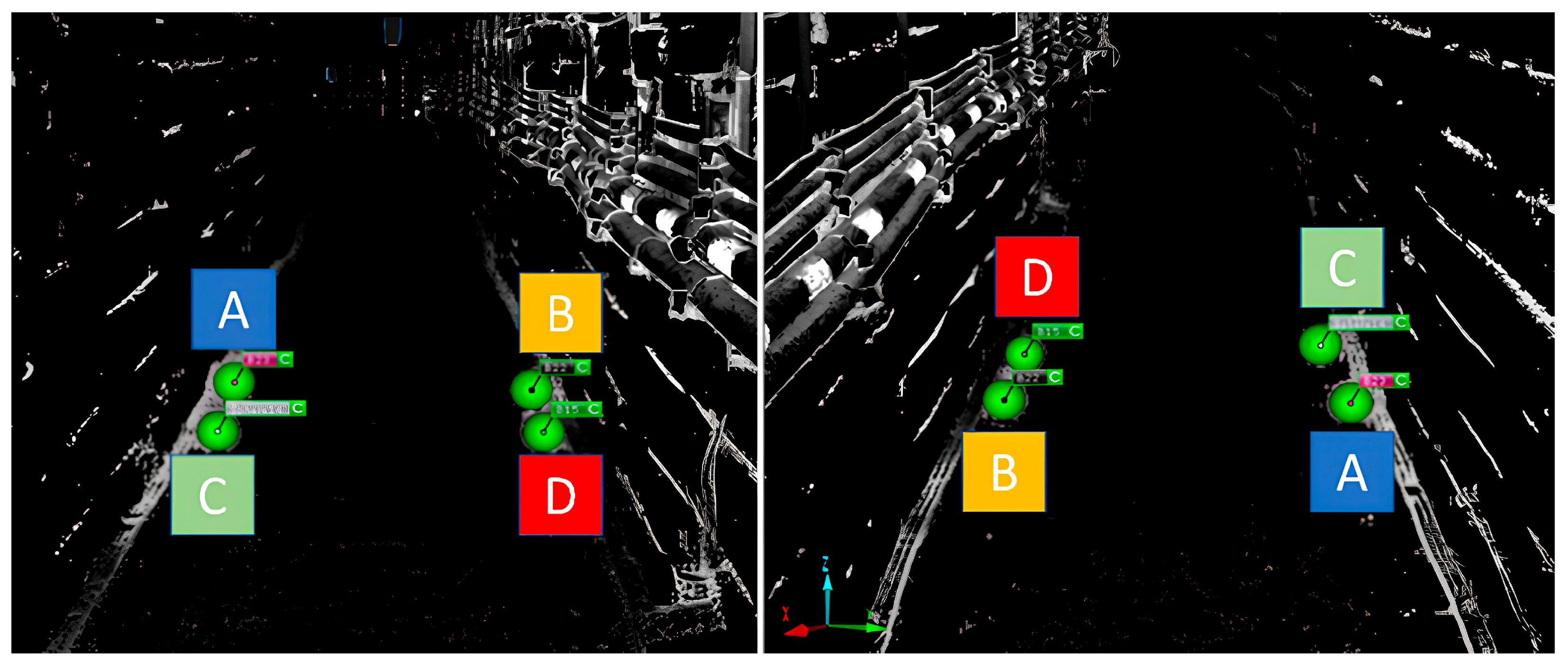
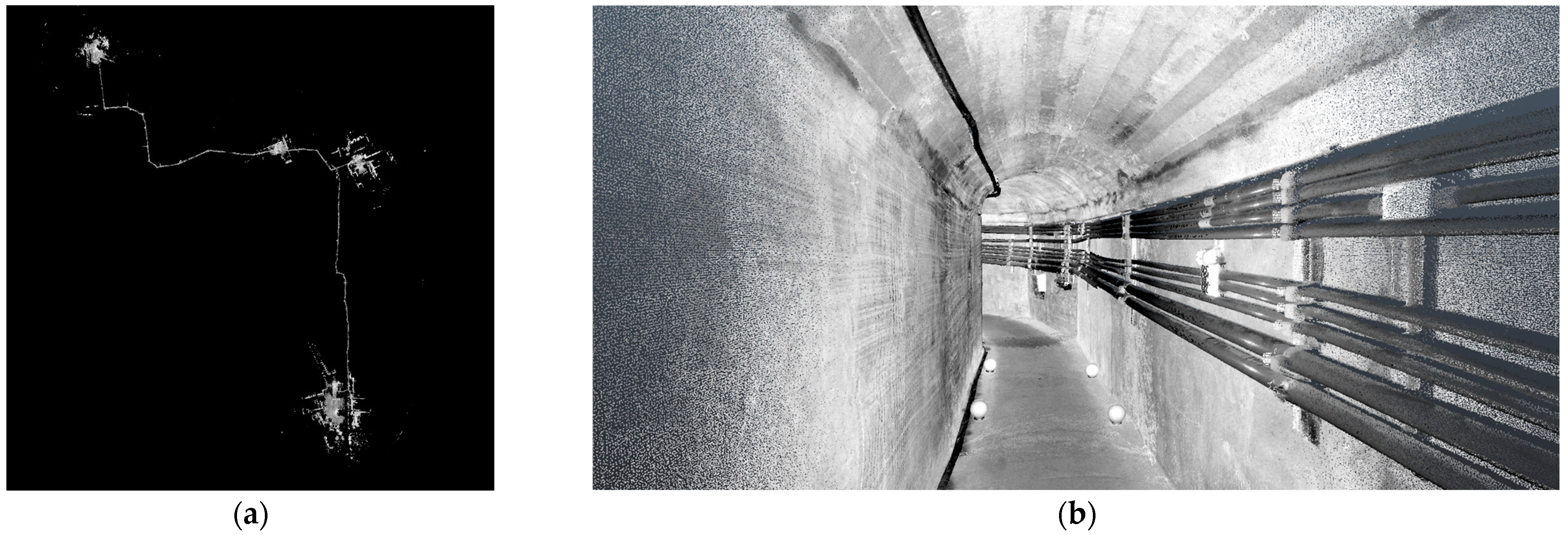
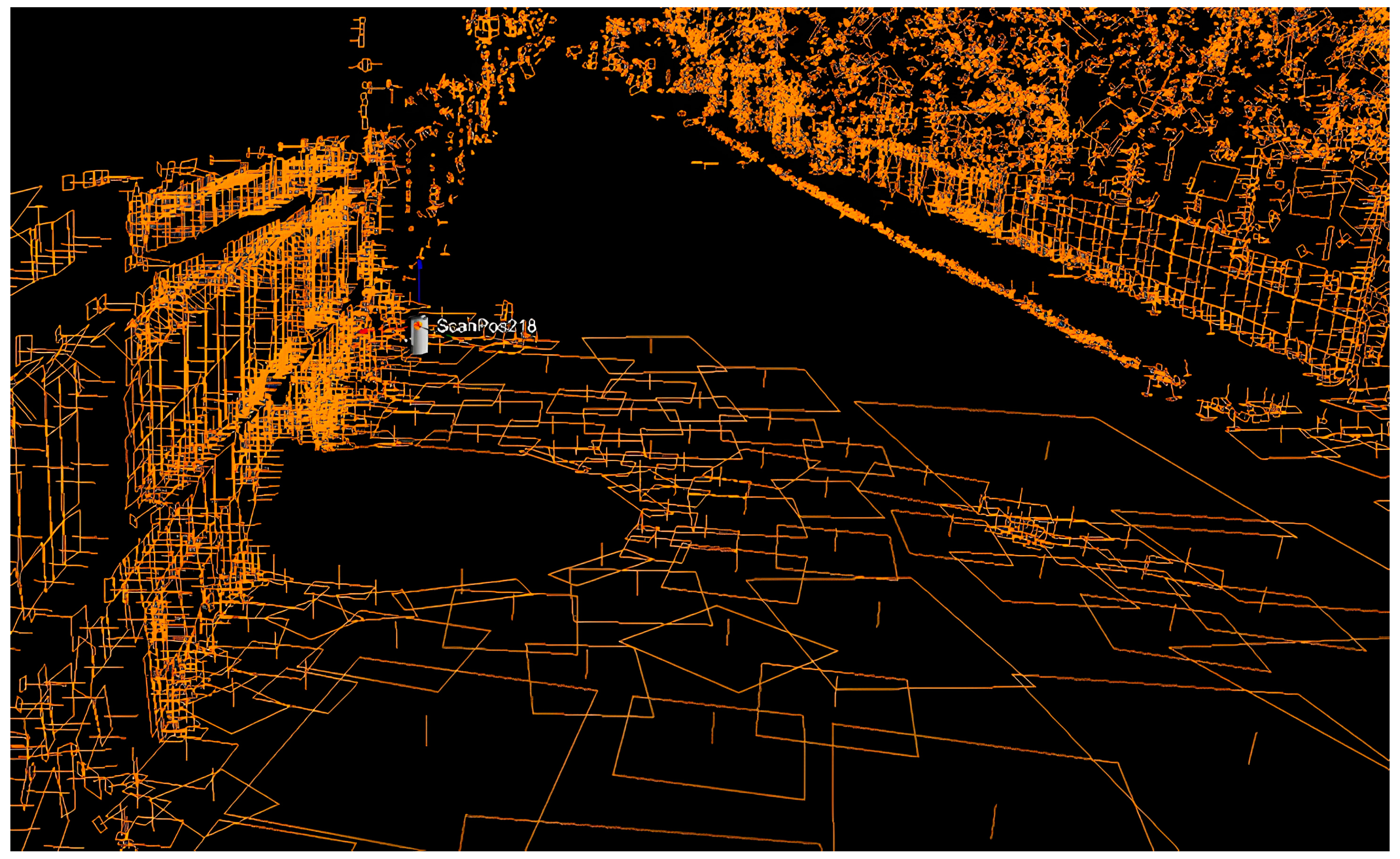



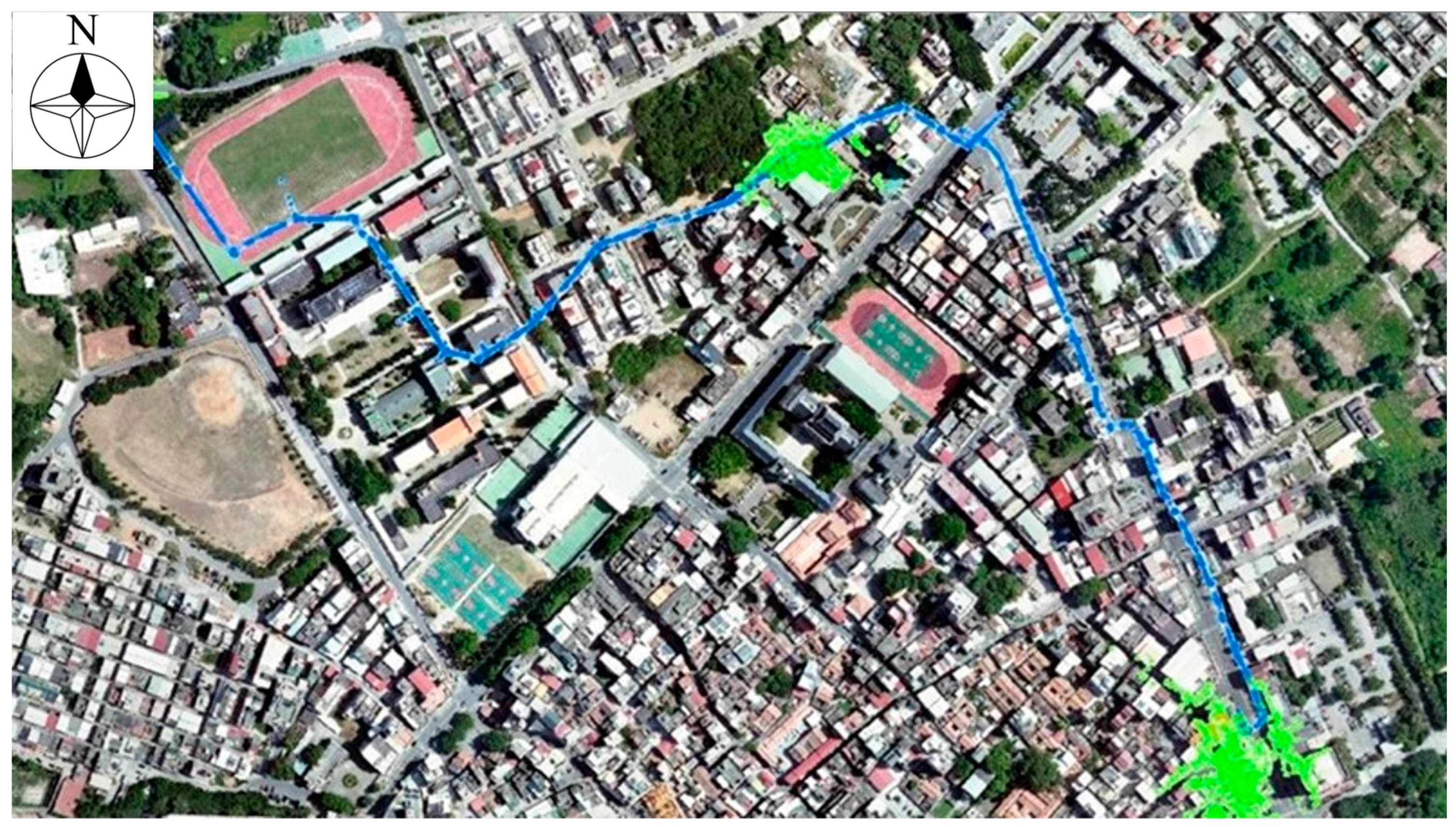
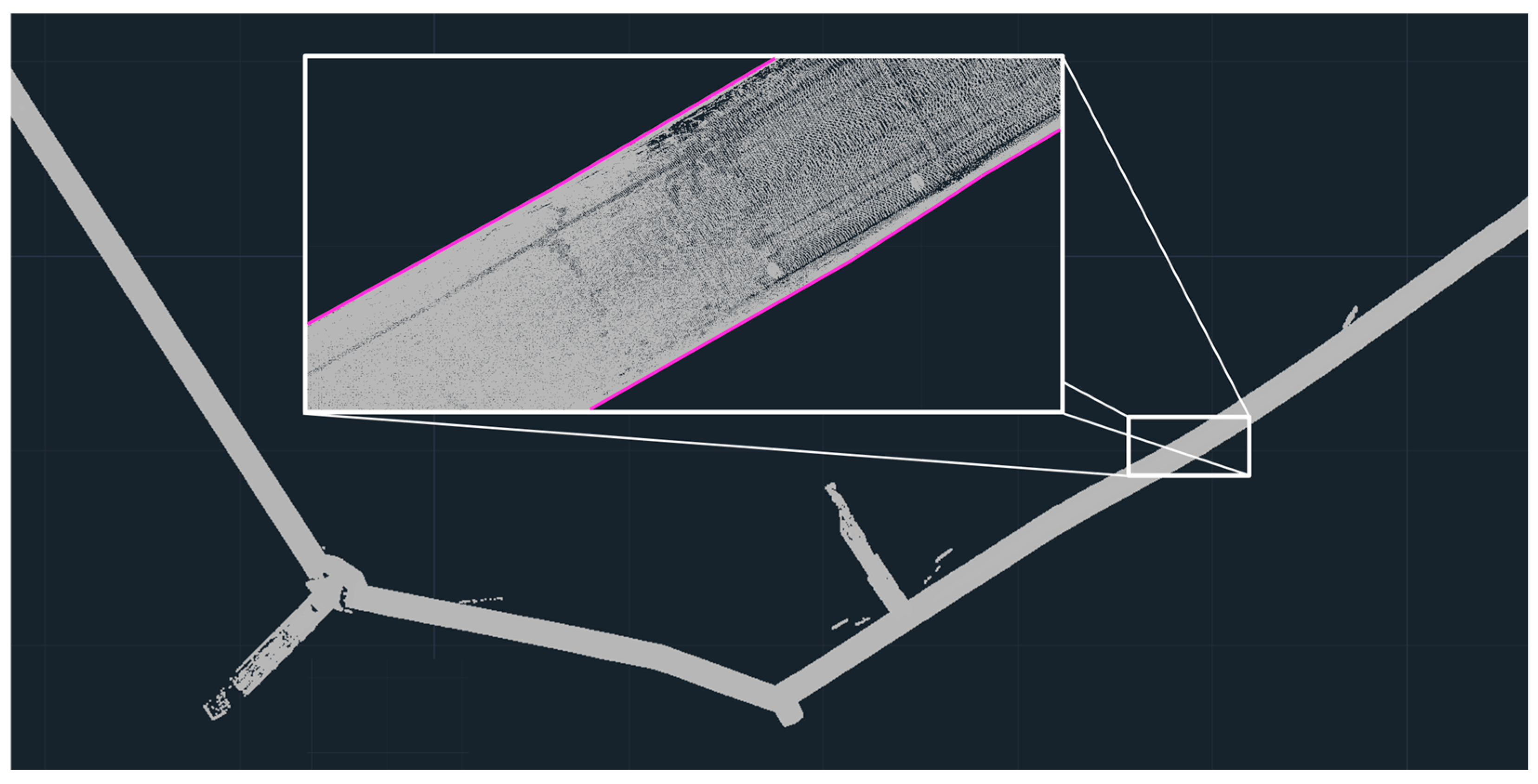

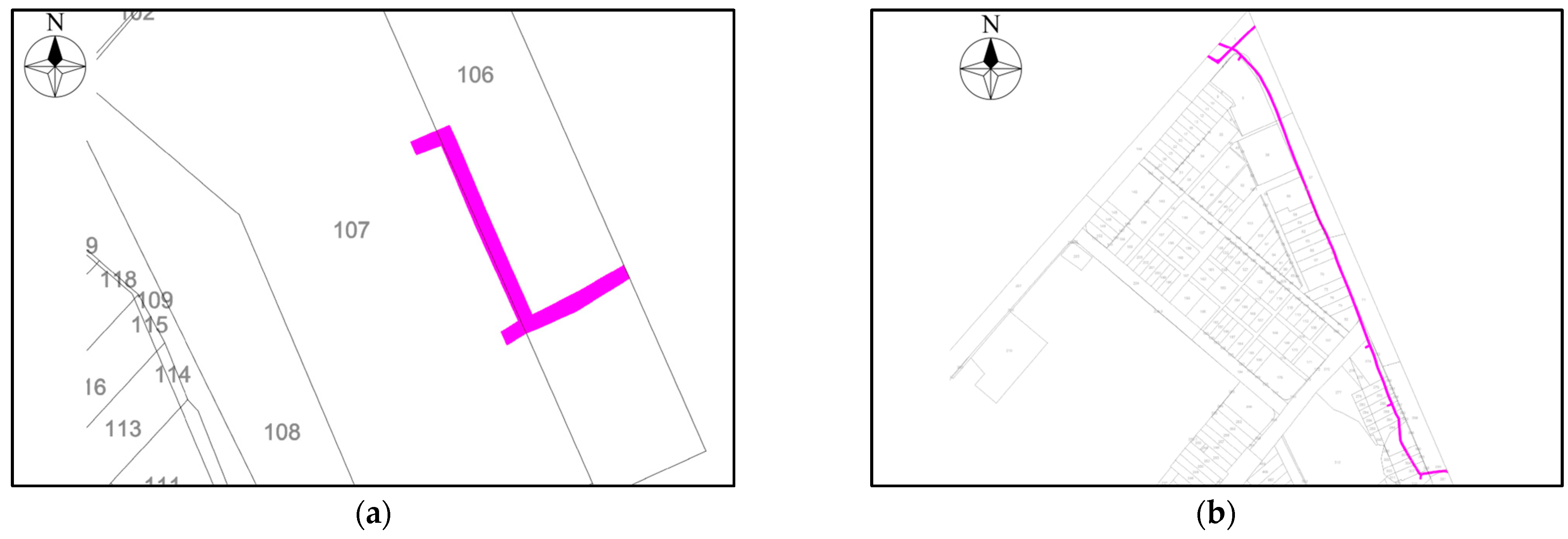
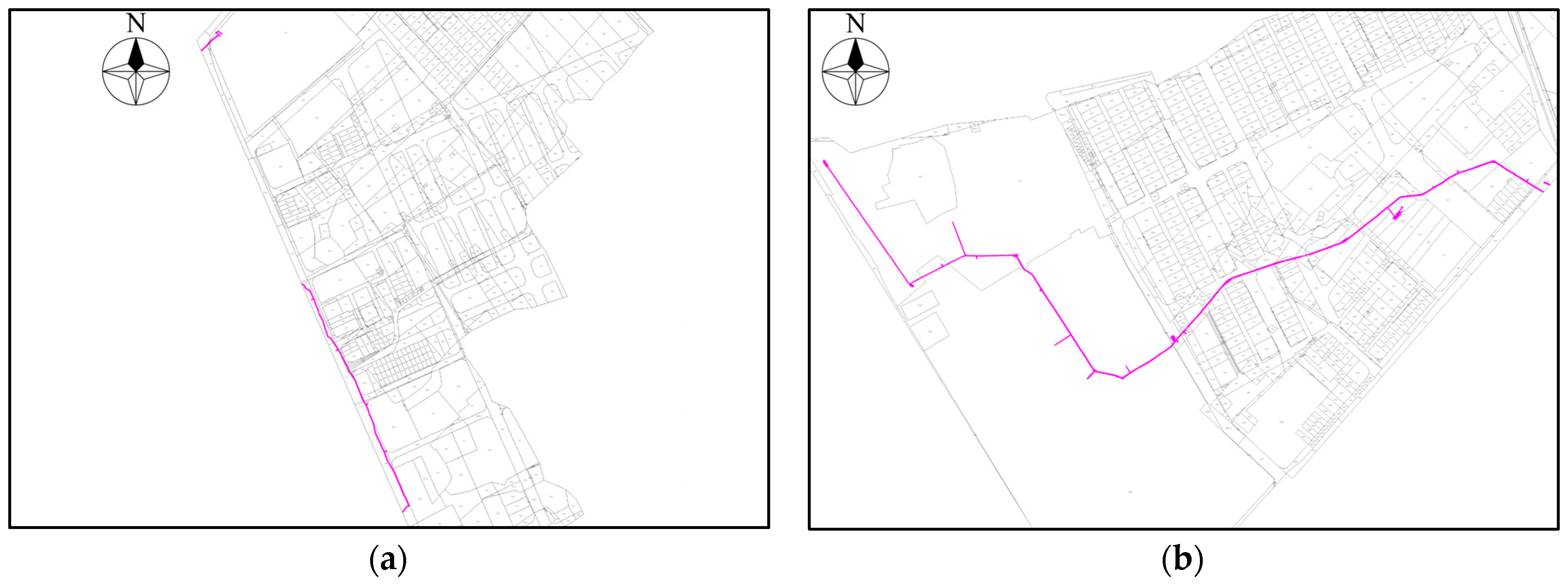
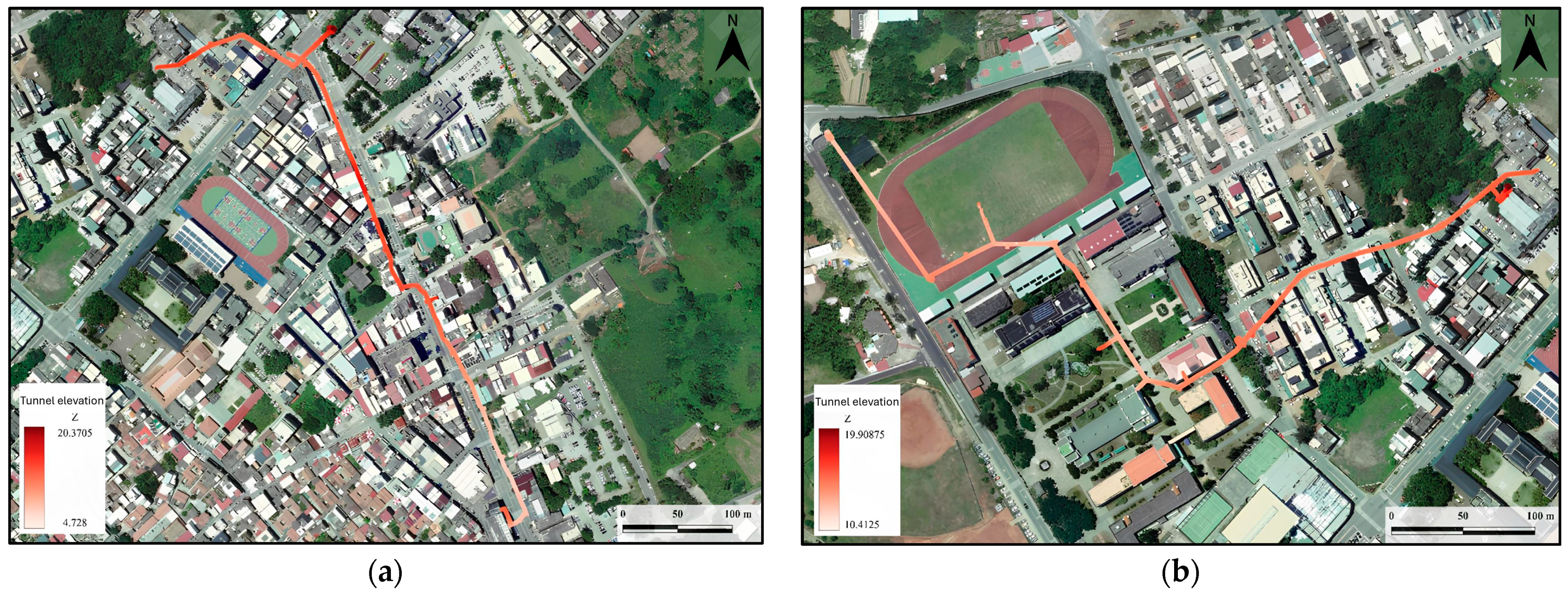




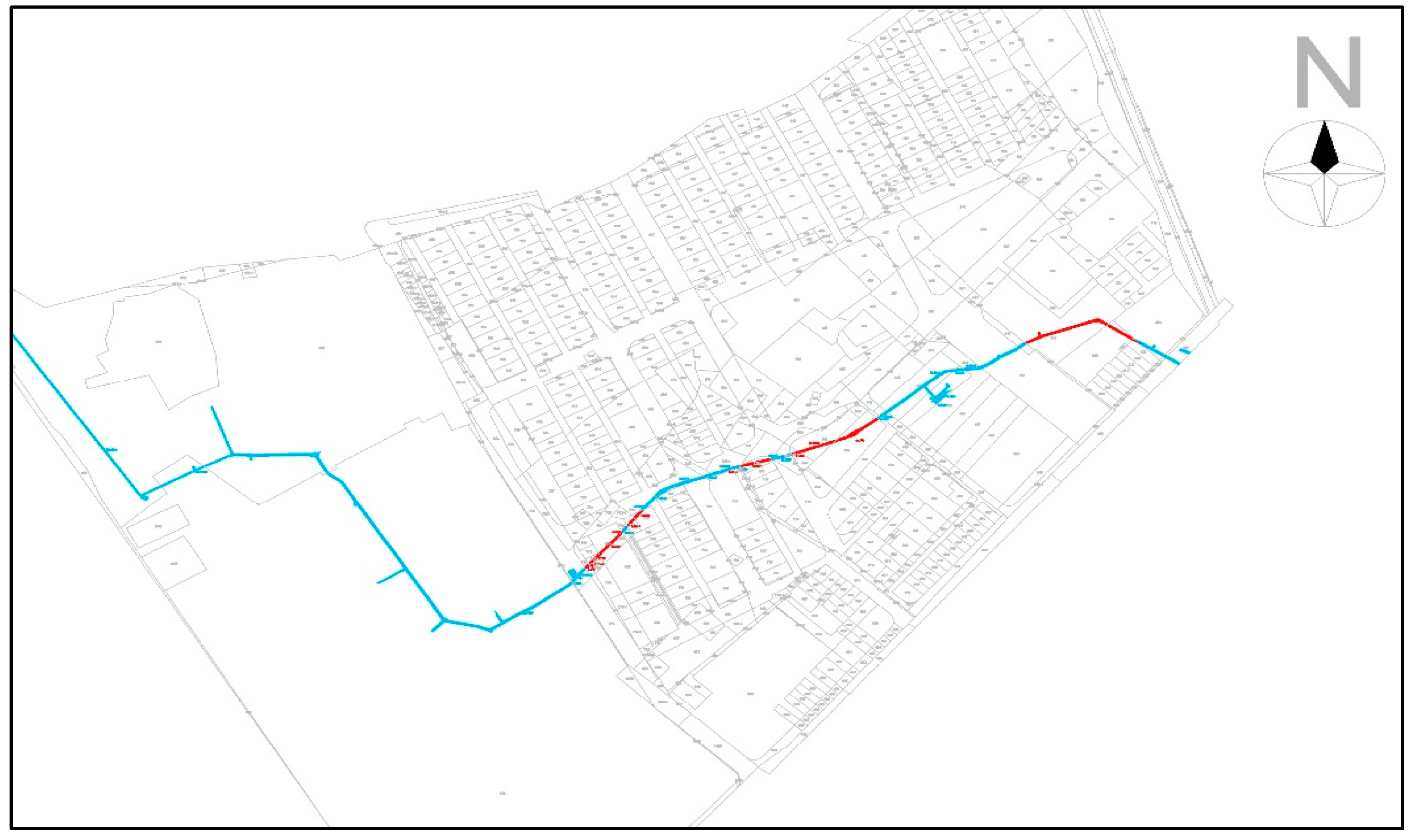
| Lots | Land Area (m2) | Public Land Area | Percentage | Private Land Area | Percentage |
|---|---|---|---|---|---|
| Cheng-Bei | 33.97 | 33.97 | 100% | 0 | 0% |
| Cheng-Xi | 310.80 | 178.43 | 57.41% | 132.37 | 42.59% |
| Xiang-An | 353.73 | 342.46 | 96.81% | 11.27 | 3.19% |
| Xiang-Rui | 1032.15 | 819.88 | 79.43% | 212.27 | 20.57% |
| Total | 1730.65 | 1374.74 | 79.43% | 355.91 | 20.57% |
Disclaimer/Publisher’s Note: The statements, opinions and data contained in all publications are solely those of the individual author(s) and contributor(s) and not of MDPI and/or the editor(s). MDPI and/or the editor(s) disclaim responsibility for any injury to people or property resulting from any ideas, methods, instructions or products referred to in the content. |
© 2024 by the authors. Licensee MDPI, Basel, Switzerland. This article is an open access article distributed under the terms and conditions of the Creative Commons Attribution (CC BY) license (https://creativecommons.org/licenses/by/4.0/).
Share and Cite
Wu, T.-C.; Lu, W.-C. The Impact of Historic Underground Buildings on Land Use. Land 2024, 13, 1046. https://doi.org/10.3390/land13071046
Wu T-C, Lu W-C. The Impact of Historic Underground Buildings on Land Use. Land. 2024; 13(7):1046. https://doi.org/10.3390/land13071046
Chicago/Turabian StyleWu, Tsung-Chiang, and Wei-Cheng Lu. 2024. "The Impact of Historic Underground Buildings on Land Use" Land 13, no. 7: 1046. https://doi.org/10.3390/land13071046





